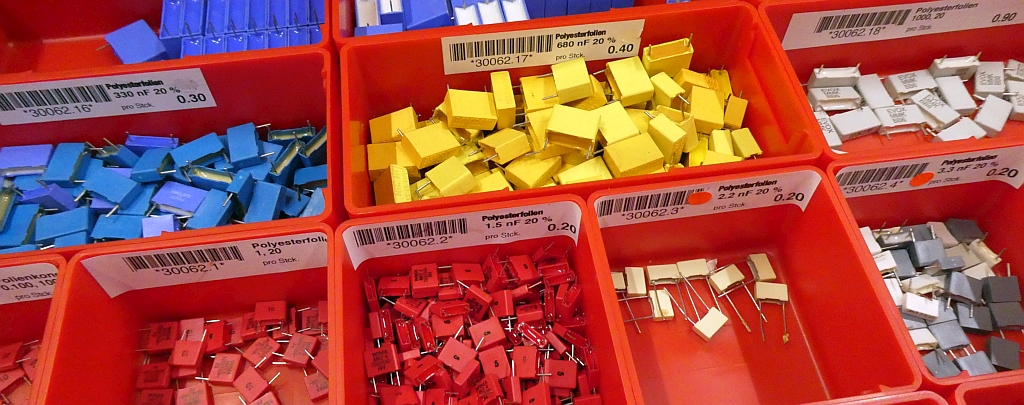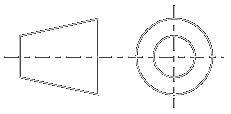
Categories
Statistics
Since 08.08.2014
Counts only, if "DNT = disabled".
Your IP is 18.226.169.94
ec2-18-226-169-94.us-east-2.
Counts only, if "DNT = disabled".
Your IP is 18.226.169.94
ec2-18-226-169-94.us-east-2.
Info
เราจะทำแบบวิศวกรผู้ยิ่งใหญ่

27. April 2024
Your valuable opinion :
MKS-MKP.php 7693 Bytes 13-12-2023 12:50:08
What's all this MKS stuff anyhow ?
An Overview ... based on DIN 41379

Metal-Plastic Capacitors (MK capacitors) consist of a thin Plastic Foil on which a thin layer
of Metal (mostly Aluminium) is vapour-deposited. Very often the Foil is rolled up to save space.
That is why such Capacitors sometimes are also called Film Capacitors or Wound Film Capacitors.
The Overview below sums up some characteristics of the different dielectrica.
The Overview below sums up some characteristics of the different dielectrica.
MKT • MKH
| Dielectric | Polyester, Polyethylene terephthalate (PET) |
| Conductor | Aluminium |
| Advantages | Good pulse handling capability, little moisture-dependent, solvent-stable, high insulation resistance, high dielectric strength, small dimensions, very good self-healing performance |
| Disadvantages | temperature dependence is large and non-linear large dissipation factor, 0.5% at 1 kHz audible distortion in hi-fi applications |
| Applications | General applications, HF switch mode power supplies, operation up to 125°C |
MKC • MKM
| Dielectric | Polycarbonate |
| Conductor | Aluminium |
| Advantages | low temperature influence, small dimensions, good long-term stability |
| Disadvantages | Not suiteable for High Frequency |
| Applications | Suitable for Audio Frequency, automotive electronics, operation up to 100°C |
MKU • MKL
| Dielectric | Cellulose Acetate (Synthetic Resin) |
| Conductor | various |
| Advantages | medium loss factor, self-healing, particularly high overload capacity, small dimensions |
| Disadvantages | Not suitable for surge discharge circuits, dielectric breakdown of 63 V |
| Applications | General purpose |
MKS • MKY
| Dielectric | Polystyrene, Polyethylene terephthalate |
| Conductor | Aluminium |
| Advantages | extremely low loss, and excellent electrical characteristics, specifically capacitance change over temperature, which is typically +-1% over the temperature range of -55 to 85°C |
| Disadvantages | very low dielectric constant (k) of 2.1, only small values available ! |
| Applications | Resonant Circuits, Bypass, Timing, DC-Block |
MKP, Metallized polypropylene film capacitors
| Dielectric | Polypropylene |
| Conductor | Aluminium |
| Advantages | high pulse handling capability, high voltages up to 2000 V, low moisture absorption, low loss factors, and capacitance stability throughout the temperature range |
| Disadvantages | temperature sensitive above 85 °C |
| Applications | Resonant Circuits, For critical electrical conditions |
✈ Share your thoughts
The webmaster does not read these comments regularely. Urgent questions should be send via email.
Ads or links to completely uncorrelated things will be removed.
Your Browser says that you allow tracking. Mayst we suggest that you check that DNT thing ?
 ช้างเผือก
ช้างเผือก
